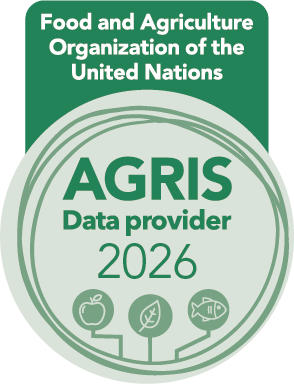Studies on genetic variability and relationship of bael (Aegle marmelos (L) Correa) using morphological and molecular markers
DOI:
https://doi.org/10.24154/jhs.v17i1.846Keywords:
Bael, genetic variability, morphology, molecular markersAbstract
Bael (Aegle marmelos (L) Correa) is an important underutilized fruit crop of India. A total of 25 bael trees were selected from 356 bael trees of Sakharayapattana in Chikkamagalur district, Karnataka, India based on the fruit morphological traits (fruit weight, pulp weight, skull thickness, seed weight per fruit, No. of seeds per fruit, No. of locules per fruit, No. of seeds per locule, pulp wt. : seed wt.). These 25 trees were evaluated for phenotypic and genotypic variations using random amplified polymorphic DNA (RAPD) and inter-simple sequence repeats (ISSR) markers. RAPD and ISSR markers showed significant polymorphism among the trees. Jaccard’s genetic similarity value of RAPD and ISSR was found in the range of 0.00–0.95 and 0.06–0.56, respectively suggesting a moderate level of genetic diversity. The present study revealed that molecular markers can be successfully utilized for determining genetic diversity and relationship of bael trees for further varietal improvement.
Downloads
References
Downloads
Published
Issue
Section
License
Copyright (c) 2022 Amulya R N, Nagarajappa Adivappar, Shivakumar B S, Satish K M

This work is licensed under a Creative Commons Attribution-NonCommercial-ShareAlike 4.0 International License.
Authors retain copyright. Articles published are made available as open access articles, distributed under the terms of the Creative Commons Attribution-NonCommercial-ShareAlike 4.0 International License, which permits unrestricted non-commercial use, distribution, and reproduction in any medium, provided the original author and source are credited. 
This journal permits and encourages authors to share their submitted versions (preprints), accepted versions (postprints) and/or published versions (publisher versions) freely under the CC BY-NC-SA 4.0 license while providing bibliographic details that credit, if applicable.








 .
. 











